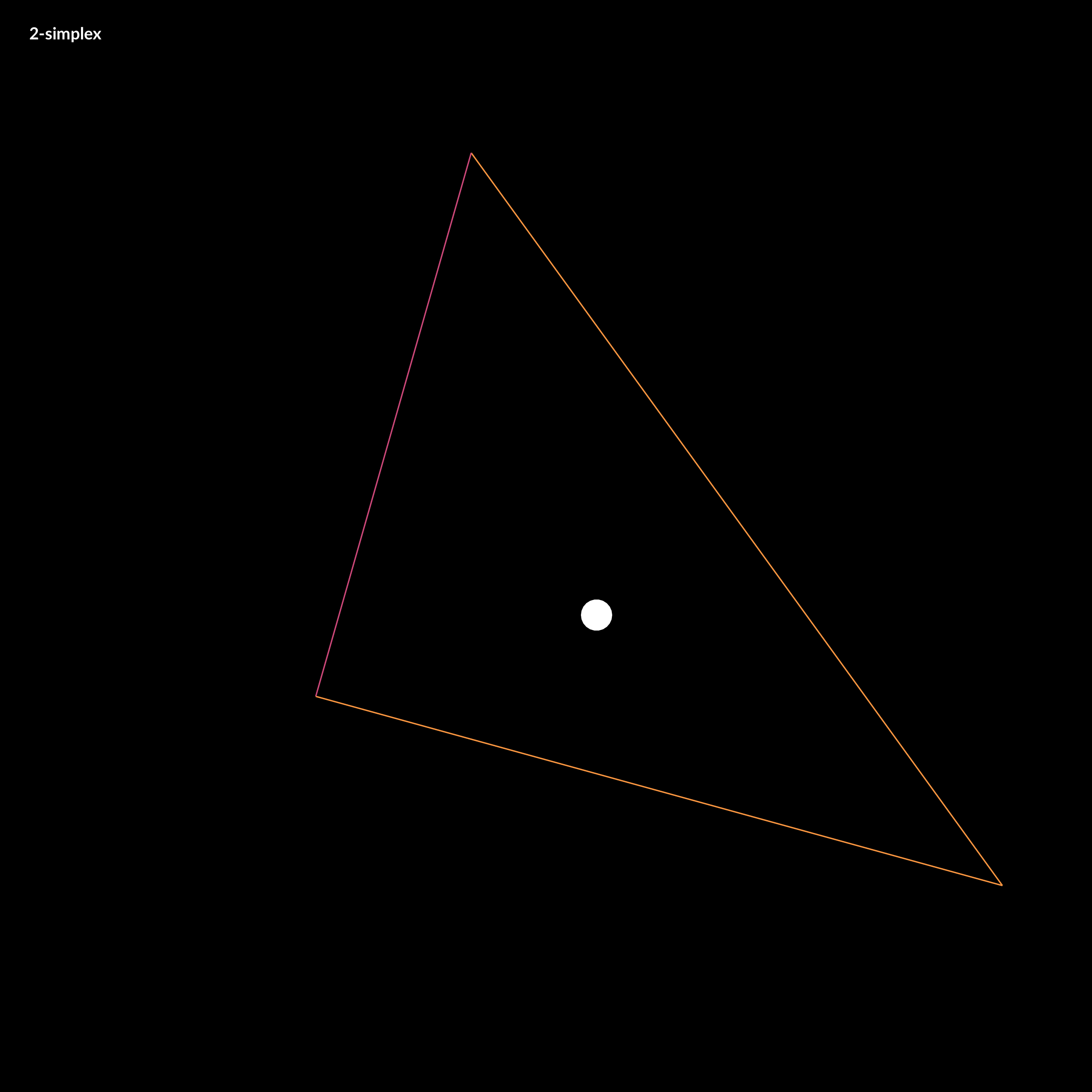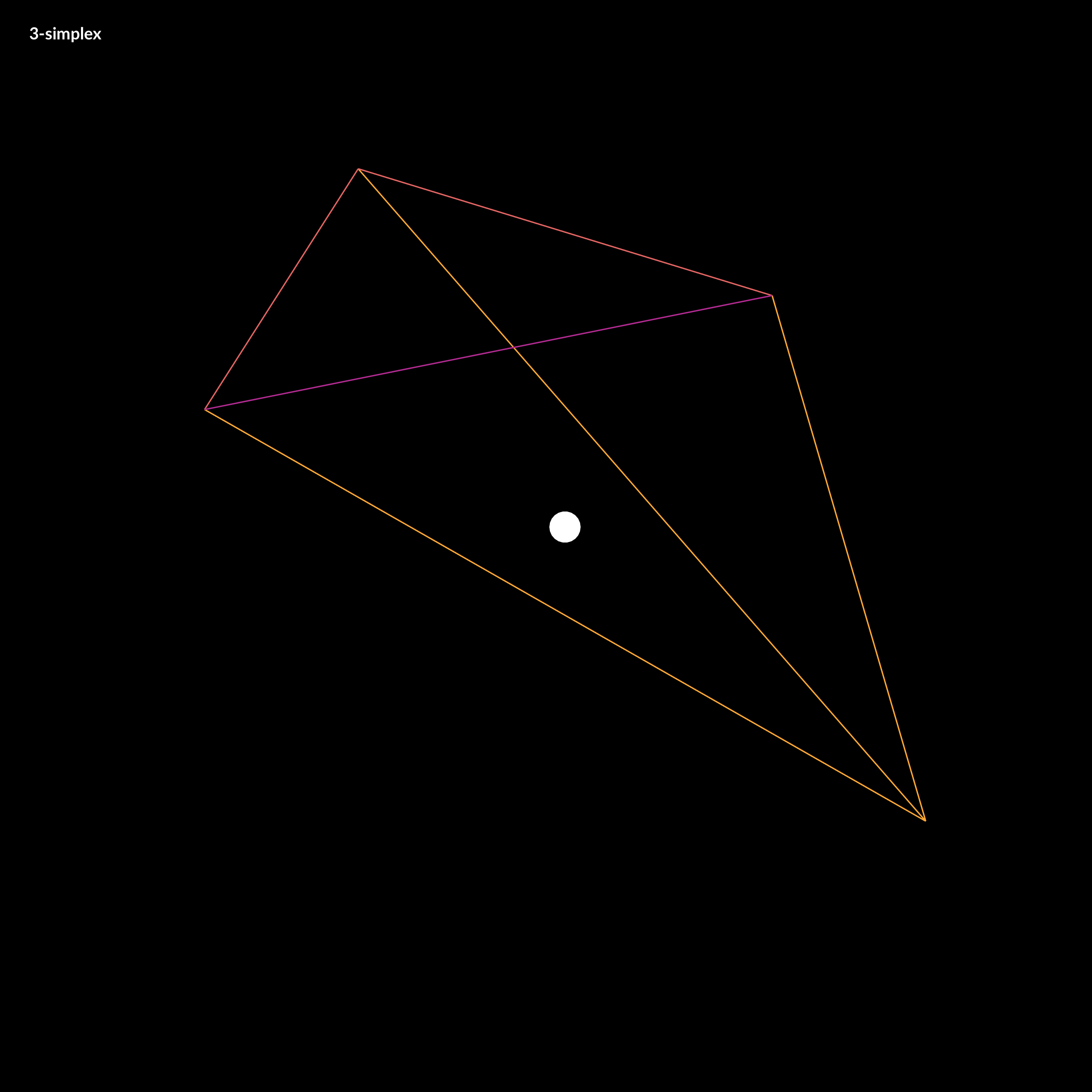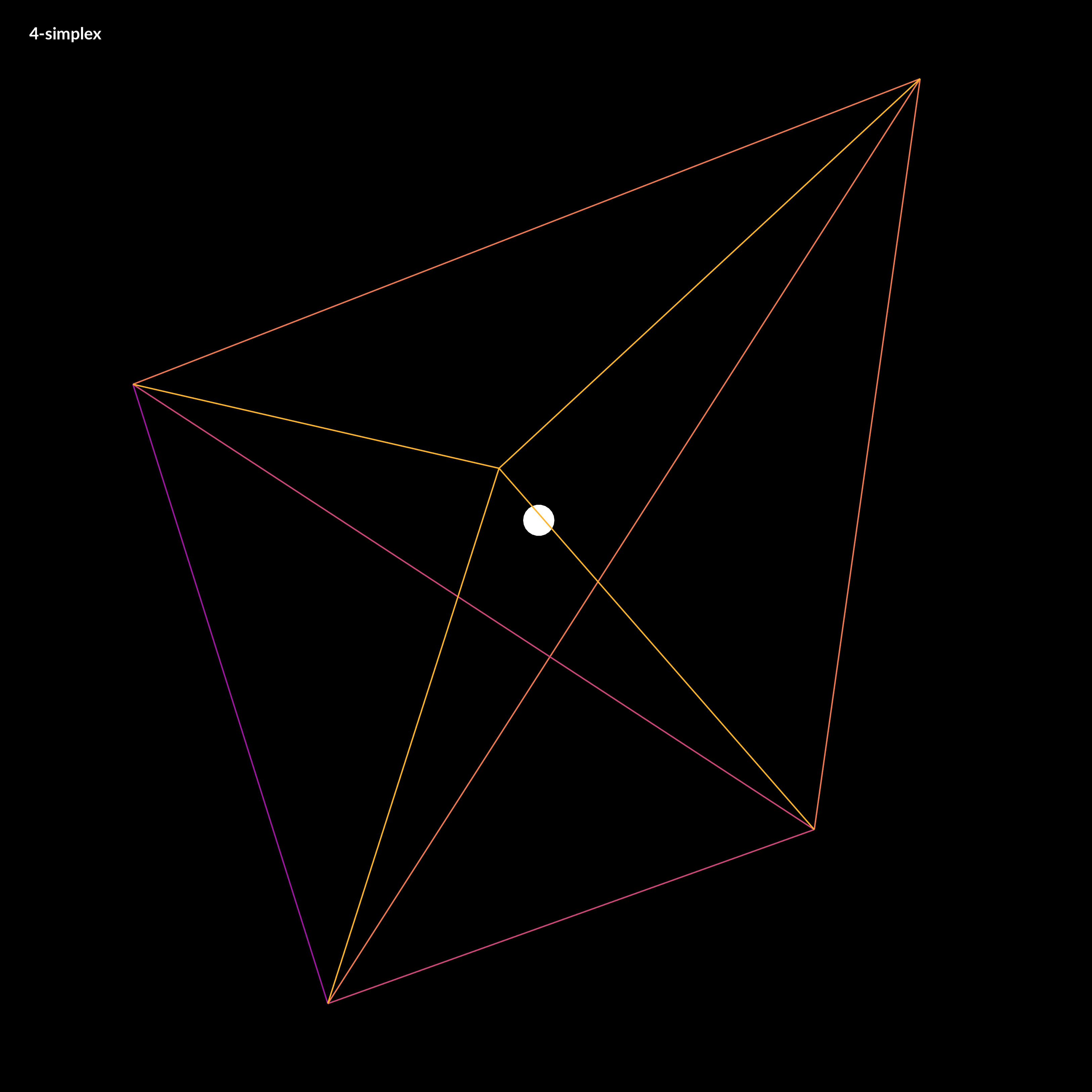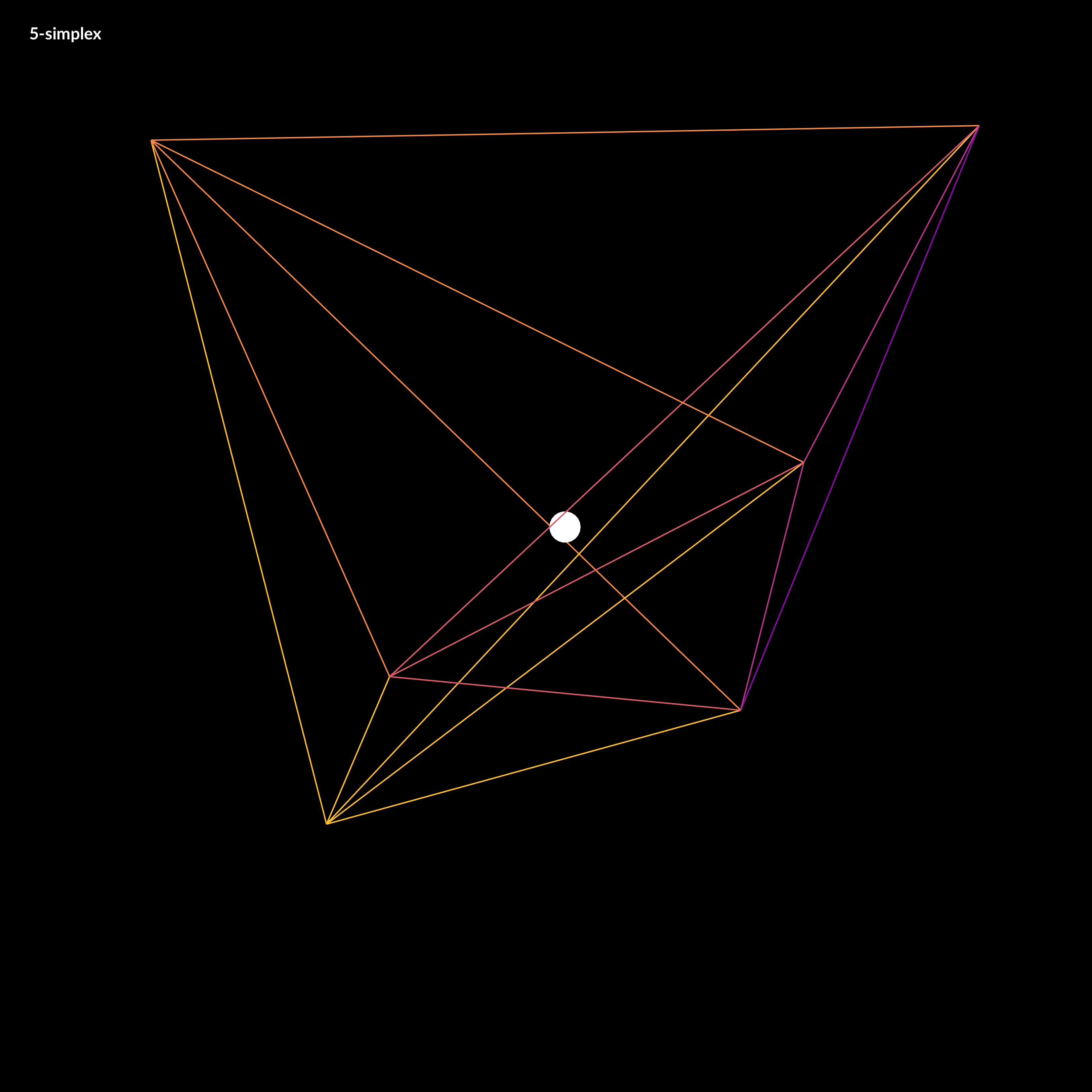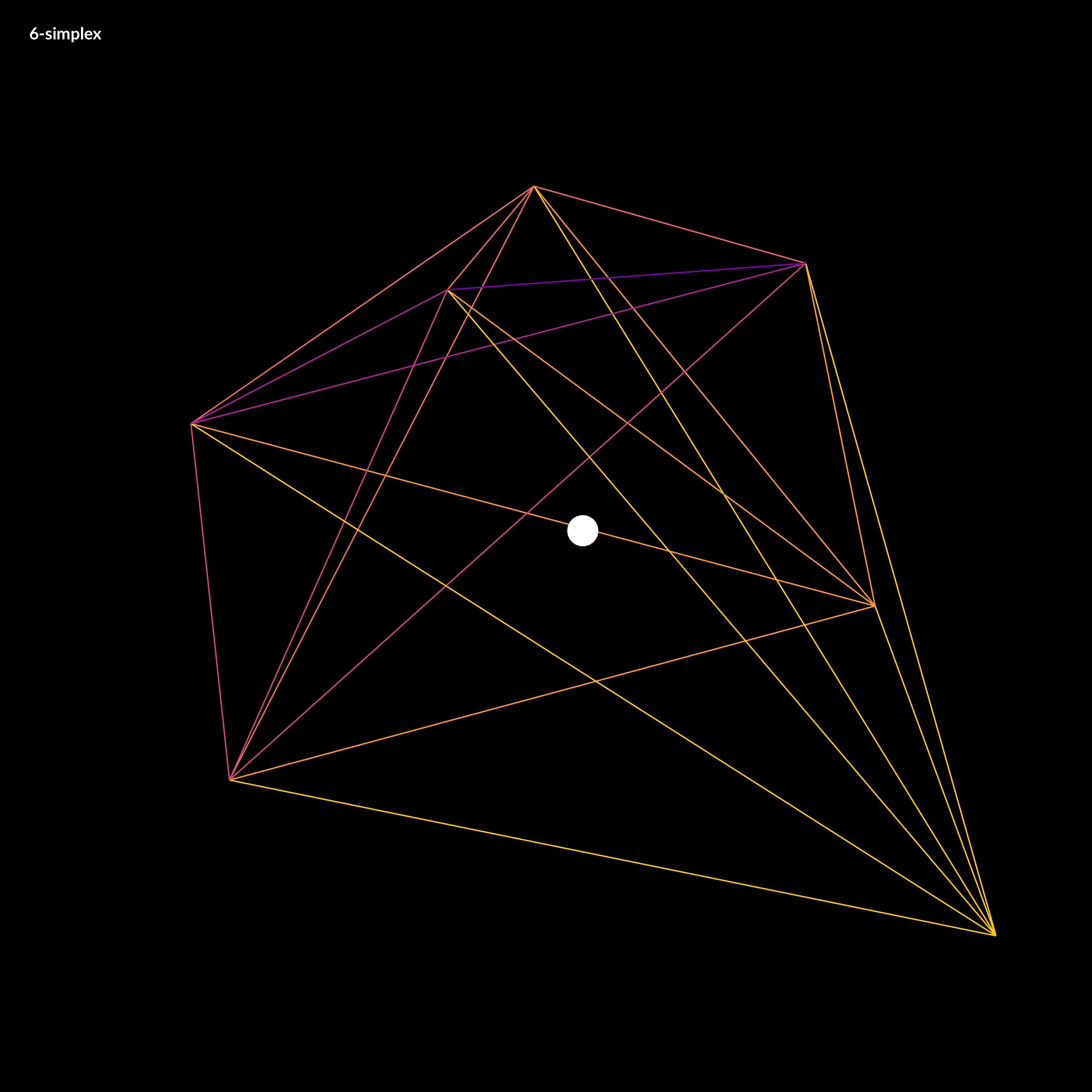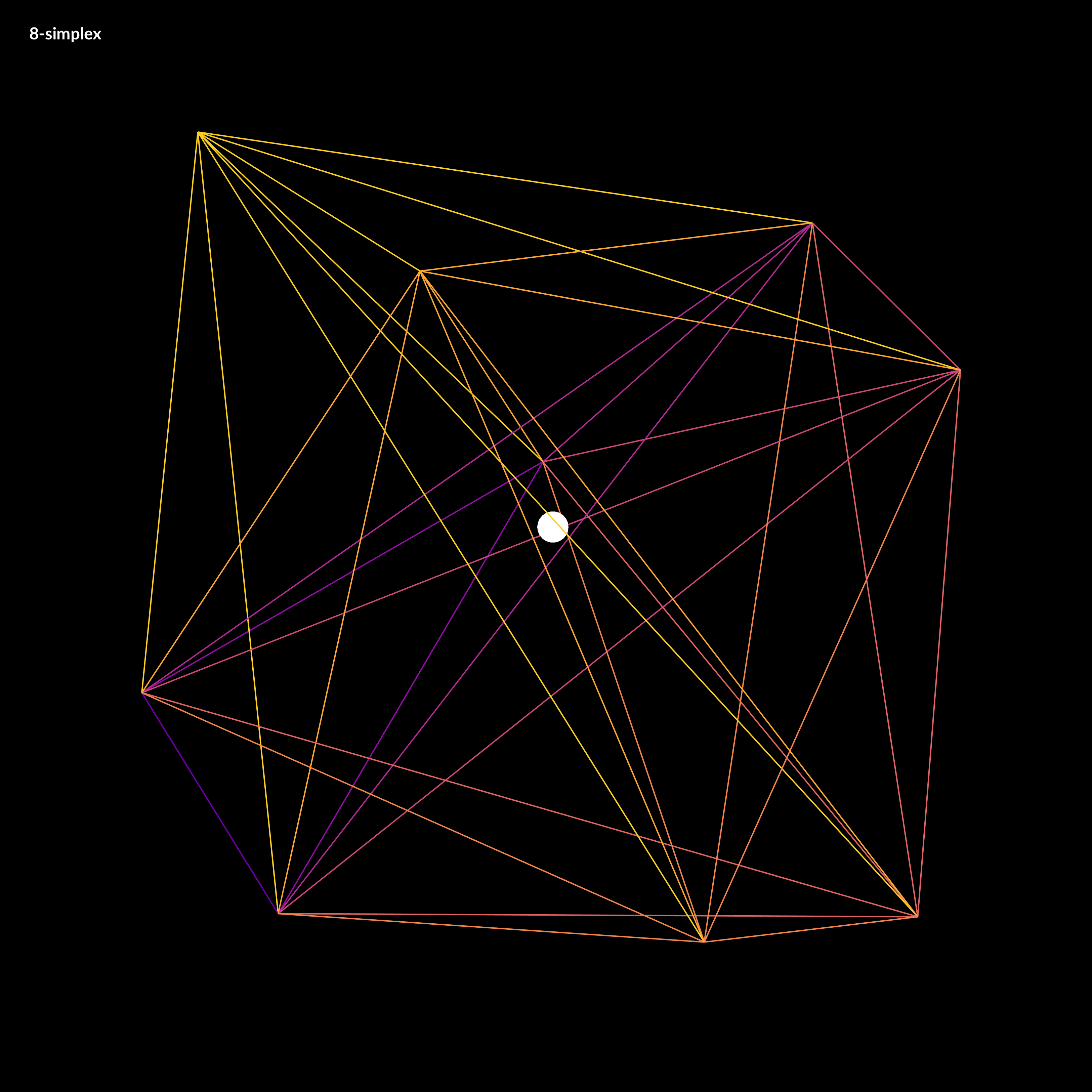#026 - The simplex kernel
Imagine a gigantic chess board and a king piece. In this analogy the model lattice is the board, and the kernel is the king piece. The piece moves one square at a time, linearly, till each column is sweeped, and then moving to the next column, until every chess tile is visited once. This is the basic architecture of how a uniform lattice elevation model is created from a mosaic of eclectic datasets. The kernel size K determines how many “neighboring” tiles the king gathers information from, in turn used to assign an average elevation to the visited tile in that iteration. A large K is smoothing because it collapses many neighboring tiles into a single value, whereas a small K produces a shaper (but more jagged) surface, since it averages a smaller region. Kernel size also determines its shape, which in this case is in the shape of a simplex. A simplex is a polytope that extends into an arbitrary number of dimensions. Described here is the code to visualize a simplex.
simplex=[3;4;5;6;7;8;9;10];
poly=nsidedpoly(simplex);
Z=rescale(rand([simplex,1]),-1,1);
X=poly.Vertices(:,1);
Y=poly.Vertices(:,2);
Kernel=cat(2,X,Y,Z);
Xa=[];Ya=[];Za=[];
Xb=[];Yb=[];Zb=[];
figure('Position',[650,10,780,780],'Resize','off','Color','k');hold on;
set(gca,'CameraViewAngleMode','manual');axis off;axis equal;
scatter3(Kernel(:,1),Kernel(:,2),Kernel(:,3),0.01,'w','filled');
scatter3(0,0,0,500,'w','filled');
count=0;colors=(plasma(length(Kernel)));
for i=1:length(Kernel)
A=Kernel(i,:);
for q=1:length(Kernel)
if q>=i
else
count=count+1;
B=Kernel(q,:);
Xa(count)=A(1,1);Ya(count)=A(1,2);Za(count)=A(1,3);
Xb(count)=B(1,1);Yb(count)=B(1,2);Zb(count)=B(1,3);
plot3([A(1,1);B(1,1)],[A(1,2);B(1,2)],[A(1,3);B(1,3)],'-', ...
'Color',colors(i,:),'LineWidth',1);
drawnow;pause(0.05);
end
end
end
